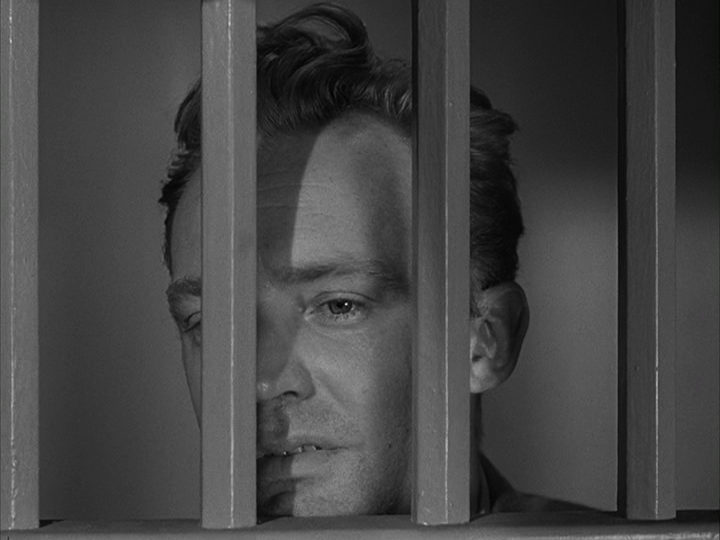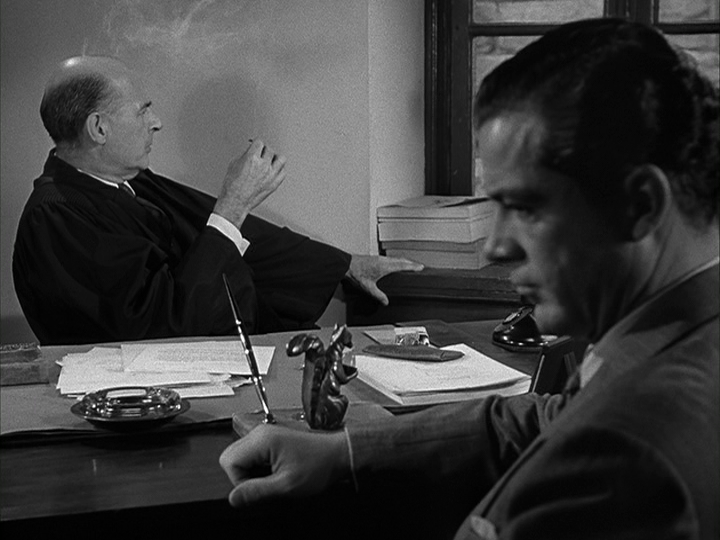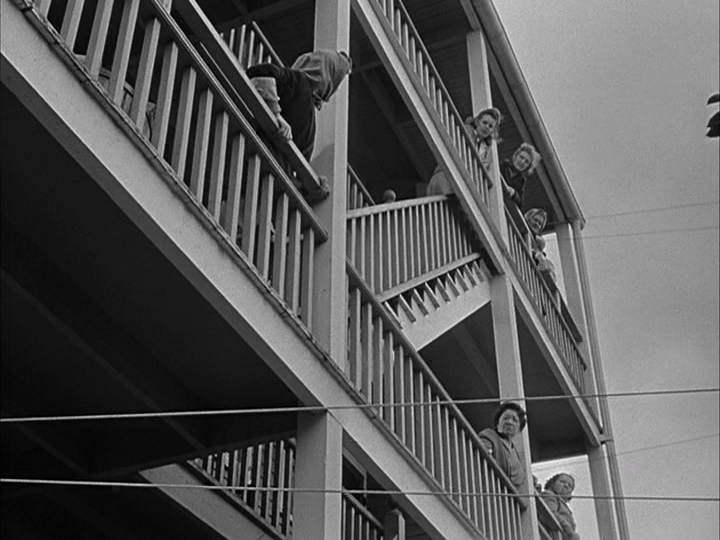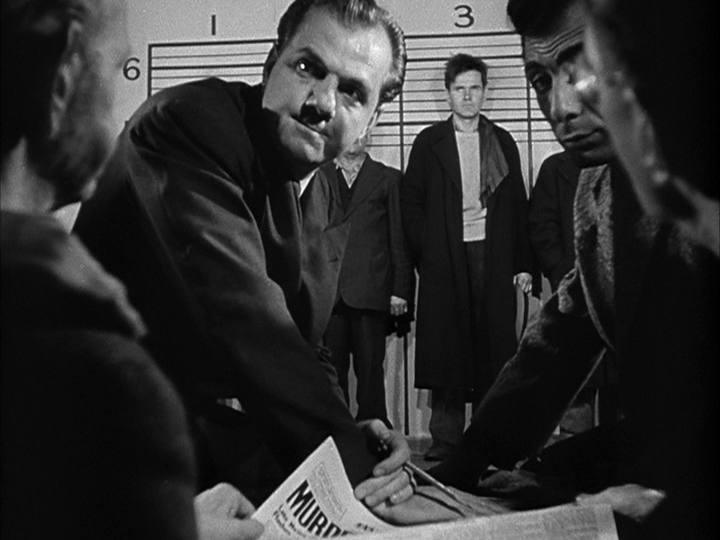|

Synopsis:
When a priest (Wyrley Birch) is brutally murdered on the streets of a small Connecticut town, the chief detective (Lee J. Cobb) heads an investigation leading to the state’s attorney (Dana Andrews) being called in to prosecute a man (Arthur Kennedy) who has been tortured into confessing. Soon Andrews finds himself caught in an elaborate scheme of corruption involving, among others, the Commissioner of Public Works (Ed Begley) and the head of the political opposition party (Taylor Holmes).
|
|
Genres, Themes, Actors, and Directors:
- Arthur Kennedy
- Corruption
- Courtroom Drama
- Dana Andrews Films
- Elia Kazan Films
- Falsely Accused
- Jane Wyatt Films
- Karl Malden Films
- Lawyers
- Lee J. Cobb Films
- Murder Mystery
Response to Peary’s Review:
Peary asserts that this “dated, overrated semi-documentary by Elia Kazan” — based on a real-life story involving veteran Harold Israel and U.S. State Attorney Homer Stille Cummings — starts out as “a daring attack on corrupt machine politics, mob violence, press irresponsibility, and fascist police tactics”, but “turns out to be the glorification of an honest man”. He writes that the “trouble is that Andrews is the only character who comes out smelling like a rose”, and complains the screenplay deviates from the facts given that the real “case was never solved”, instead “presenting another suspect (a perverted fellow about whom the priest was about to tell authorities [Philip Coolidge])” in a move Peary refers to as “unfairly manipulative”. He also argues it’s “unfair of Kazan not to let on that Andrews was conducting a serious investigation until the hearing”, given that “we [are] led to believe it is only a hunch that makes him think Kennedy innocent”.
I think Peary holds a grudge against Kazan for being “a friendly witness before H.U.A.C”, and it shows. There’s nothing wrong with the introduction of Coolidge as a player in this fictionalized drama, just as there’s nothing at all misleading about leaving Andrews’ investigation of the case as a series of dramatic flashbacks in the film’s culmination. While the film is perhaps overly bold in its assertion of corruption around every corner, who’s to say that’s not (still and always) the case? Indeed, it’s terrifying to watch the police “drag in anybody wearing a dark coat and white hat” as a suspect; to see a jilted former girlfriend (Cara Williams) willfully lie to get Kennedy persecuted; to witness a confession tortured out of Kennedy through sleep deprivation; and to recognize the overall relief of nearly everybody involved when someone — anyone — is held responsible for the death of their beloved priest. (Not a whole lot has changed in our collective desire for criminal “justice” at the cost of potentially innocent lives.) The film is expertly directed by Kazan, with fine use of on-location shooting in Connecticut, stark angles and cinematography, and strong performances by a roster of familiar supporting faces.
Redeeming Qualities and Moments:
- Dana Andrews as Henry Harvey

- Arthur Kennedy as John Waldron

- Atmospheric cinematography

- Fine on-location shooting

- Strong direction by Kazan

Must See?
Yes, once, as a worthy early film by Kazan.
Categories
Links:
|






2 thoughts on “Boomerang! (1947)”
Agreed – a once-must, at least, for its unique approach to storytelling and for the performances.
To address a point in the assessment… film fanatics – those of us who watch an incredible amount of film – come up against a delicate stumbling block when told how to feel about directors like Kazan (or Woody Allen, Polanski, etc.) due to things such people did in their personal lives. There’s no easy answer for that. Do we not watch their films? Do we separate who they are as artists from who they are as people? Would we feel more strongly about it (it’s possible we might easily) if we were in the lives of these people and knew them in a way that made it that much more difficult to see their work?
I don’t have an answer for that – though I have thought about it a lot. The easiest answer I can come up with is… we stop watching if they make bad films (which is pretty much what I’ve done with Allen). It is quite often that who people are as artists simply isn’t who they are as people. It can be like witnessing the two completely different sides of the same brain.
‘Boomerang’ is often (it seems to me) thought of as one of Kazan’s lesser works. It’s certainly not talked about much. And, yet, its embrace of realism (and naturalistic acting) can be found in most of Kazan’s work. He seemed to be not at all interested in acting that was ACTING but, instead, more concerned with truth found in character. He wanted audiences to feel things in their guts. Of course, many directors feel that way – many of the better ones, at least. But, with this film, Kazan went one step further by choosing documentary-style material to suit his purpose.
I’m in agreement with all of the main points brought out in the assessment regarding the ‘strange bedfellows’ reality of justice and its mix with corruption. We see it time and time again – in ways brought out in this film as well as other ways, not depicted but equally heinous. That’s what gives ‘Boomerang’ its weight.
It’s a strong story and a strong film: two perfectly sufficient reasons to see it.
I liked the flashback where Andrews and his men re-create the crime from different angles.
I wondered about the meaning of the title. One reviewer said: “The people who framed the accused threw everything they could at him, and it came right back to them”.